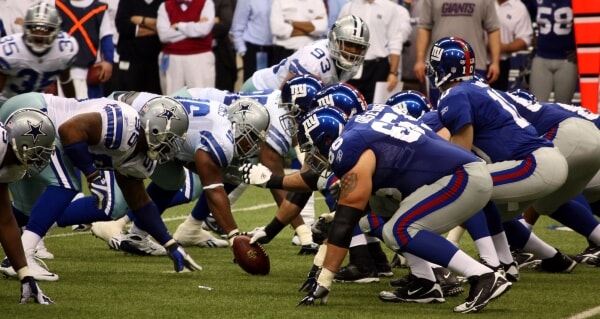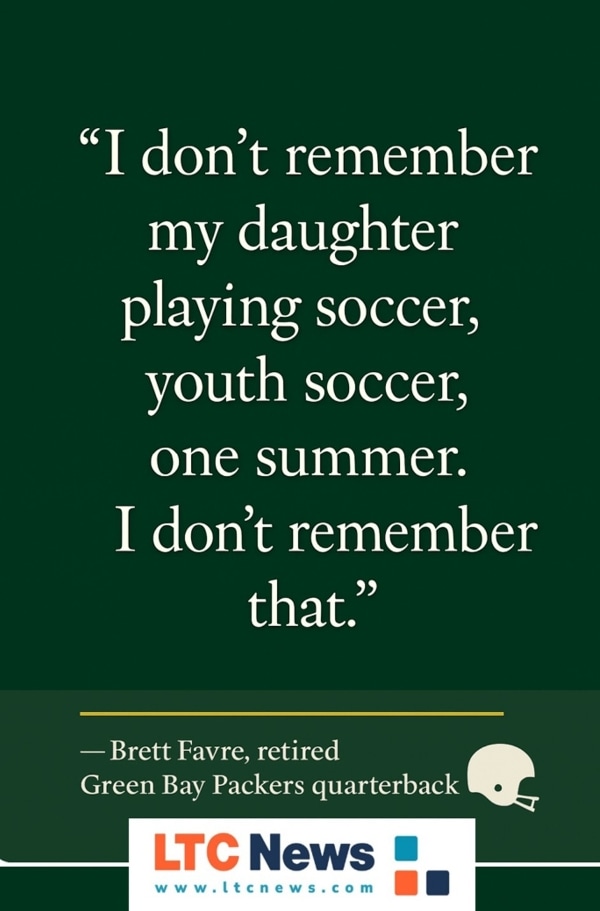When the Cheering Stops, the Damage Remains: NFL Legends Are Aging Faster Than the Rest of Us

Table of Contents
You’ve felt that ache—the sharp reminder that your body isn’t the same as it was. You may worry about memory lapses, unexpected pain, or staying independent. Now, imagine that after years of playing a brutal sport like football, those aches aren’t just part of aging—they’re a toll exacted by battle. It hits close to home. And as it turns out, those retired NFL stars may be aging faster than the rest of us.
As fans and players get ready for another NFL season, retired players are facing aging issues and even the need for long-term care services, just like the rest of us. However, most of us did not play professional sports, much less professional football.
KFF and ESPN have just released a first-of-its-kind, in-depth polling and reporting project that sheds new light on the health issues and other challenges facing NFL players after they leave the game.
The KFF/ESPN Survey of 1988 NFL Players draws on a novel survey of 546 respondents who were among the 1,532 players from the 1988 season.
Now, at an average age of 62, large majorities of these former NFL players say pro football was bad for their health, but 90 percent say they would choose to play again.
Physical Toll: Pain, Disability, Surgeries
Every day pain is shockingly common. About 69 percent of former 1988 NFL players say they experienced pain “every day” or “most days” in the past three months—that’s more than twice the 33 percent among other men their age.
Thirty-five percent say that pain limits their life or work—again, double what men their age report.
Pro Football Hall of Famer Joe Montana, the former San Francisco 49ers quarterback, has said lingering injuries — including arthritis in his hands — still cause him pain, especially at night.
In the middle of the night they hurt like crazy. — Joe Montana.
Disability rates among these former athletes are massive. Sixty percent live with some form of disability—three times higher than the 21 percent in the general population. Disabilities include serious trouble walking, climbing stairs, concentrating, or bathing.
Orthopedic surgeries are nearly universal—87 percent had at least one, and 39 percent had five or more. Chronic conditions like arthritis, lupus, or fibromyalgia affect two-thirds of former players (66 percent)—compared to only 38 percent of men their age.
Brain Drain: Cognitive Decline and Neurological Illness
Nearly all (95 percent) of these players reported experiencing at least one head injury—including concussions or even just “seeing stars.” About half (55 percent) report worsening memory or confusion in the past year, more than three times the 16 percent reported by others their age.
My memory's pretty much gone. There are a lot of times when I walk into a room and forget why I walked in there. — Jim McMahon, former quarterback, Chicago Bears.
Forty-three percent say a health professional has diagnosed them with a neurological condition, including post-concussion syndrome (28 percent), CTE (18 percent), and dementia or Alzheimer’s (15 percent).
Remembering people's names; I take my kids to practice for years, and all of a sudden, I don't know how to get there. — Tony Dorsett, former running back, Dallas Cowboys.
Mental Health: Depression, Loneliness, Anxiety
About one-third describe their mental health as “fair” or “poor”—versus just 10 percent of men in the same age group. Feelings of anxiety (53% vs. 34%), depression (45% vs. 24%), and loneliness (40% vs. 25%) are all significantly higher.
Nearly 25 percent say they needed mental health services or medication in the past three years but didn't receive them—three times the rate of other men their age. Black former players were twice as likely as White players to skip needed mental health care (31% vs. 16%).
I've had short-term memory loss, erratic behavior where the least little thing would set me off. — Leonard Marshall, retired defensive end with the New York Giants.
Those living with chronic pain or disability were much more likely to struggle mentally—52 percent of players with disabilities describe their mental health negatively (vs. just 6 percent of those without). Support networks matter. Players with strong nearby support were far less likely to feel anxious, depressed, or lonely.

Racial Divide: Black Players Bear Far More Burden
Black former players report worse outcomes across nearly every measure—even compared to similar Black men in the general population.
- Disabilities: 69 percent of Black players vs. 48 percent of White players
- Cognitive dysfunction: 60 percent vs. 30 percent
- CTE: 25 percent vs. 10 percent
- Dementia: 21 percent vs. 9 percent
- Worsening memory issues: 65 percent vs. 43 percent
Black players were also more likely to experience pain that limited activities (41% vs. 28%) and more likely to have periods of being unable to work due to football-related injuries (37% vs. 19%).
Pre- and post-career factors—like lower average incomes, lack of insurance coverage, and socioeconomic disadvantages—likely contribute to these disparities.
Retired NFL Players Have Access to Long-Term Care Insurance Through League Plan
Unlike most of us, NFL players have access to group Long-Term Care Insurance benefits. Vested former NFL players can apply for a collectively bargained Long-Term Care Insurance benefit beginning at age 50 under the NFL Player Insurance Plan, according to league benefit documents.
The NFL Alumni Association — a distinct organization from the NFLPA — also promotes an LTC Insurance option for former players and spouses.
Note: Benefits are subject to change under the CBA; players should consult the official Summary Plan Description or the NFL Player Benefits office for current terms.
Insurance or not, quality extended care, even at home, will improve the quality of life of anyone who needs help with daily living activities or supervision due to a decline in their memory.
As a preferred partner for the NFL Alumni Association, our goal is to provide excellent in-home support staff to retired players and family members alike. The education, wellness programs, and resources extended to retired players are second to none. The NFL and its affiliates are going above and beyond to address this need for this unique group of retirees. I have benefited from the generosity of the association and look forward to helping our families in need — Tafa Jefferson, Founder & CEO, Amada Senior Care, Former Player and NFL Alumni Member
LTC News partners with Amada Senior Care to provide quality in-home care services and free LTC Insurance claim support with no cost or obligation. Their trained experts can walk you through the entire process and help you access benefits quickly and correctly — File a Long-Term Care Insurance Claim.
Most LTC Insurance is sold individually, and individual Long-Term Care Insurance is more comprehensive and more affordable than the few group plans that are available through employers.
Learn more by reviewing the LTC News Long-Term Care Insurance Education Center. Most LTC Insurance requires medical underwriting, but there are options for those with health issues. Be sure to speak with a qualified and experienced Long-Term Care Insurance specialist to get information and free and accurate quotes from all the insurance companies offering long-term care solutions.
What This Means for You—and Your Aging Journey
You don’t have to be an NFL veteran to see yourself in these struggles. The truth is, the challenges that retired players face—chronic pain, memory decline, and rising medical needs—mirror what many adults over 45 begin to worry about in their own lives.
While the causes may be different, the outcome is familiar: health complications that interfere with work, daily routines, and independence. That’s why their story matters to you. It’s a vivid reminder that planning for long-term care isn’t just for athletes—it’s for anyone who wants to protect their health, dignity, and family as they age.
Here are practical steps you can take now to safeguard your future:
- Listen to your body, brain, and feelings. Early warnings may not just be “normal aging.” Address them.
- Plan for long-term care. Visit the LTC News Cost of Care Calculator to understand the cost of extended care services where you live.
- Check in with professionals. Regular physical, neurologic, and mental health screenings are vital.
- Build your support network. A few trusted friends or family members close by can make a huge difference in battling anxiety, loneliness, and depression.
- Address inequality. If past or current systemic barriers are hurting you—or someone you love—know that addressing that is part of caring for health.
- Purchase LTC Insurance. Long-Term Care Insurance is a key part of retirement planning, even for NFL players. For you, options are available, but act sooner rather than later. Most people acquire an LTC policy between the ages of 47 and 67.
Final Thought
You’ve watched players carry the weight of the game. Now, imagine carrying the weight of age—on your joints, your mind, your independence. It’s heavy, but you don’t have to carry it alone.
Start planning now—through honest conversations, expert guidance, and smart preparations—to meet your future with strength, clarity, and dignity.


